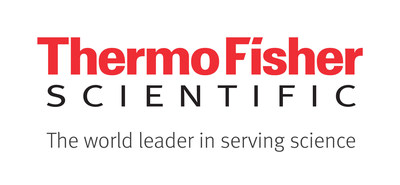New Study Reinforces Clinical Utility of Combining Tumor Mutation Burden and PD-L1 as Predictive Biomarkers for Immune Checkpoint Inhibitor Therapy
CARLSBAD, Calif., Sept. 5, 2019 /PRNewswire/ — Tumor mutational burden (TMB) has recently emerged as a potential biomarker to help guide ICI (immune checkpoint inhibitor) therapy. A new study published in The Journal of Pathology further establishes TMB’s relevance in the immuno-oncology space, particularly when it is analyzed in combination with PD-L1 expression data, to more accurately identify patients who may respond positively to ICI therapy. Data from the study will be presented during the 31st European Congress of Pathology (ECP) congress in Nice, France.
The multi-institutional study assessed TMB retrospectively in 76 metastatic non-small cell lung cancer (NSCLC) patients who received ICI therapy, and identified a cutoff to subcategorize them into low, intermediate and high TMB. The clinical research team, led by Dr. Philip Jermann, Head of Molecular Assay Development, Institute of Medical Genetics and Pathology, University Hospital Basel, found that 64 percent of patients with high TMB (TMB >= 9) responded positively to ICI therapy compared to 29 percent of patients with low TMB (TMB < 5). TMB-high patients also showed significantly longer progression-free survival (PFS) and overall survival (OS).
The highest response rate, however, was observed in PD-L1 positive samples with high tumor mutational load (75 percent, +9 percent compared to TMB alone), compared to the PD-L1 negative and TMB-low and TMB-intermediate population (22 percent). The researchers concluded that their findings support the complementary use of biomarkers and prognostic factors to increase the precision of patient stratification.
“Given early promising results showing a correlation between high mutational load and increased response rate to immune checkpoint inhibitor therapies, there is a push to establish TMB in routine diagnostics,” said co-author Luca Quagliata, PhD, global head of medical affairs for clinical NGS and oncology, Thermo Fisher Scientific. “Not only does this study underscore the potential of TMB as a predictive biomarker, it also indicates that the integration of different biomarkers, such as PD-L1, may provide even more accurate predictions to guide clinical decision-making. Increasingly, we are looking to other biomarkers such as T-cell receptor (TCR) and gene expression profiling in the tumor microenvironment to further increase predictive power in multivariate molecular profiling.”
This is one of the first published TMB studies that evaluates the performance of Thermo Fisher’s Oncomine Tumor Mutation Load Assay, which is able to generate in-house results in about the same time labs spend to produce PD-L1 data – enabling results from both tests to be analyzed in parallel.
The study findings are in line with a recent clinical research study led by Dr. Paul Hofman, which showed that TMB assessments performed in a French hospital’s clinical laboratory using the Oncomine Tumor Mutation Load Assay provided comparable results and predictive value to a commonly ordered, commercial next-generation sequencing (NGS) panel that is available only as an outsourced test. The two studies were conducted independently in different countries and used different immune checkpoint inhibitors, yet found the same cutoff to define low, intermediate and high TMB. Dr. Hofman’s findings, published this month in Cancers, will also be presented at ECP.
“The ability to conduct TMB analysis in-house creates an opportunity for oncologists, clinical staff and the molecular pathologists to form a molecular tumor board and jointly determine the best treatment options for patients,” said Winand Dinjens, PhD, head Pathology Molecular Diagnostics, Erasmus MC Cancer Institute, Rotterdam, The Netherlands, who is not associated with the study. “This collaboration allows the oncologist to ask questions about the patient’s gene mutation and enables the pathologist to become part of the patient’s care team. This type of scenario can greatly improve the quality of patient care.”
Dr. Jermann will present data from the study at Thermo Fisher’s ECP satellite symposium on Sept. 9 during his talk entitled, Biomarkers for immuno-oncology: Tumour mutational load and beyond – The impact of a multidimensional approach. For more information, please visit the company’s booth (R16) at ECP. The study was enabled, in part, with financial support from Bristol Myers Squibb.
About Thermo Fisher Scientific
Thermo Fisher Scientific Inc. is the world leader in serving science, with revenues of more than $24 billion and approximately 70,000 employees globally. Our mission is to enable our customers to make the world healthier, cleaner and safer. We help our customers accelerate life sciences research, solve complex analytical challenges, improve patient diagnostics, deliver medicines to market and increase laboratory productivity. Through our premier brands – Thermo Scientific, Applied Biosystems, Invitrogen, Fisher Scientific and Unity Lab Services – we offer an unmatched combination of innovative technologies, purchasing convenience and comprehensive support. For more information, please visit www.thermofisher.com.

Media Contacts
Mauricio Minotta
Director, Public Relations
+1 760 929 2456
Mauricio.minotta@thermofisher.com
Ken DiCienzo
Greenough Brand Storytellers
+1 617 275 6550
kdicienzo@greenough.biz
SOURCE Thermo Fisher Scientific






